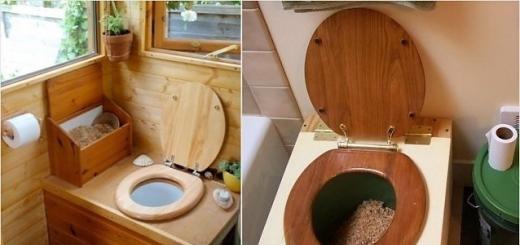Option 1
1. The oldest center of the world economy in terms of time of formation:
a) USA b) Japan c) India d) Western Europe
The agrarian structure of the economy is typical for:
a) Tropical Africa
b) Southwest Asia
c) Foreign Europe
d) North America
Old industrial areas include:
a) Ruhr, Donbass
b) Northern Canada, Alaska
c) Amazonia, Russian Far East
d) Western Australia, Siberia
In the era of scientific and technological revolution, the following industries developed most rapidly:
a) coal, mining;
b) shipbuilding, car building;
c) robotics, microelectronics;
d) food, light.
Recall the 4 main types of economic regions. Select the options in which all of the listed areas are of the same type:
a) California, Ruhr, Lorraine;
b) London, Paris, Tokyo;
c) Northern Australia, Alaska, Eastern Siberia;
d) Amazonian, New York, Milanese.
The industry is characterized by increased labor intensity:
a) non-ferrous metallurgy c) textile industry
b) electric power industry d) chemical industry.
International economic integration is:
a) duty-free zone;
b) a zone of free movement of the population;
c) the process of developing deep, stable international relations of individual groups of countries, based on the implementation of a coordinated policy by them;
d) the process of forming a special form of territorial unity in order to obtain additional benefits from production.
a) by the beginning of the 21st century, in more than 80 countries of the world, the share of the service sector had increased to 50%;
b) there are two regions in terms of natural gas reserves in the world - Overseas Asia and the CIS;
c) in the countries of North America and Western Europe, the rates of economic growth at the end of the 20th century were below the world average;
d) the EU countries have formed a single economic space with free movement of goods, capital, services, technologies, and labor.
What is the peculiarity of the branches of international specialization in developing countries Oh?
a) a large volume of specialized products;
b) specialization in raw materials and agricultural sectors;
c) transportation of specialized products is carried out by own sea transport;
d) the share of cars in exports is large.
Choose pairs in which the directions of development of production in the era of scientific and technological revolution are correctly named and examples of the implementation of these directions:
a) accelerated development of biotechnologies - the emergence of new materials (metal ceramics, fiberglass);
b) integrated automation - the use of robots in the production of cars;
c) electronization - the use of computers;
d) cosmization - the use of new energy sources, the development of nuclear energy;
e) All the given examples are correct.
Select industries for which the natural resource factor in placement is the main one:
a) shipbuilding d) logging
b) copper industry e) clothing industry
c) automotive industry e) robotics.
Name 3 countries that are members of the European Union:
a) France d) Estonia
b) Lithuania e) Iceland
c) Norway e) Switzerland
Decipher the abbreviations: a) OPEC, b) LAI
This small state in the center of Europe has significant economic potential, despite the almost complete absence of minerals. The country has a well-developed non-manufacturing sector, especially the banking sector. There are 4 official languages in the country.
Answer: _________
Test on the topic "Scientific and technological revolution and world economy» for 10th grade students
Option 2
The youngest center of the world economy in terms of time of formation:
a) Western Europe b) USA c) Japan d) New industrial countries
The industrial structure of the economy is typical for most countries:
a) Western Europe
b) Tropical Africa
d) Oceania
In what areas the development of resources became possible only in the era of the scientific and technological revolution?
a) Alsace and Lorraine
b) Amazon and Northern Canada
c) Upper Silesia and Donbass
d) Wales and the Ruhr.
The share of which industry in the structure of world production is gradually decreasing:
a) electric power industry c) precision engineering
b) mining d) chemical industry
For colonial type The territorial structure of the economy is characterized by:
a) disunity of individual parts;
b) high density of transport networks;
c) the concentration of the economy in separate territories;
d) all of the above.
The industry is characterized by increased energy intensity:
a) light industry c) food industry
b) non-ferrous metallurgy d) mechanical engineering
Specialization of individual countries in production certain types products, services and their subsequent exchange is called:
a) international economic integration;
b) a new international economic order;
c) international geographical division of labor.
Which statement refers to the manifestation of international economic integration?
a) in the last 2-3 decades in the USA, Western Europe, Japan, the development of ferrous and non-ferrous metallurgy has slowed down sharply;
b) the world market receives 10-15% of the grain produced in the world;
c) in the mid-90s of the twentieth century, the countries of East and Southeast Asia provided more than 15% of the world's products of the electronics industry;
d) 11 Latin American countries are part of the LAAI, which aims to create a "common market".
What fact convinces that the most developed countries play the main role in scientific and technological progress?
a) in these countries the share of old industries is rapidly declining;
b) industrial and raw material areas are losing their former importance;
c) mainly low-skilled workers become unemployed;
d) 7 leading economic powers of the world provide 90% of the export of science-intensive products.
Choose the false statements:
a) the branches of the "vanguard troika" are machine building, the forestry industry, and the electric power industry;
b) under the influence of scientific and technological revolution, the share of animal husbandry in agriculture is growing, and the role of fodder crops in crop production is growing;
c) the growing role of the extractive industries is explained by a decrease in the energy and material intensity of production in the economically developed countries;
d) in the era of scientific and technological revolution, maritime transport practically does not take part in the transportation of passengers.
Select the old production location factors:
a) territory factor d) transport factor
b) labor factor e) environmental factor
c) science intensity factor
Indicate 3 countries that are members of the international grouping OPEC:
a) Kuwait d) Iraq
b) Turkey e) Egypt
c) UAE e) Greece
Decipher the abbreviations: a) NAFTA, b) IAEA
Decide which country you are talking about.
It is one of the smallest countries in terms of area. It occupies an advantageous position on the routes of world trade routes. Now it is the largest trading power in Southeast Asia. Here is one of the largest seaports in the world. The state is included in the group of new industrial countries (NIS). Known as a leader in consumer electronics, information technologies and pharmaceuticals.
Geography grade 10. Test on the topic "Scientific and technological revolution and the world economy"1. The scientific and technological revolution is ..
BUT) a radical revolution in production, based on the use of completely
new technologies;
B) fundamental revolution in the productive forces of mankind, based on
the transformation of technology into the main auxiliary force of society;
AT) fundamental qualitative revolution in the productive forces of mankind,
based on the transformation of science into a direct productive
the strength of society.
^ 2 . The industrial revolution in the 18th and 19th centuries represented a transition:…
BUT) from craft to manufactory
B) from manual labor to large-scale machine production
^B) from manual labor to the water wheel.
G) from the water wheel to the electric motor.
3 . The scientific and technological revolution began in..
BUT) mid 18th century
B) at the end of the 19th century
AT) in the middle of the 20th century
G) early 20th century
4 . What not is a characteristic feature of NTR?
BUT) use of coal and oil as the main sources of energy
B) universality, inclusiveness;
AT)
^d)
D) use of its achievements for military purposes.
5 . What not is an integral part of the NTR?
BUT) the science
B) entrepreneurship
AT) technique and technology
G) production
D) control
6 . Level (share) of expenses for Scientific research and development in the total cost of
production is called:
^ A) scientific progress
B) scientific result
AT) science intensity
G) scientific process
7 . What not is the way of development of engineering and technology?
BUT) evolutionary path
B) revolutionary path
AT) escape route
8 . What not is the main direction of development of production?
BUT) electronization
B) complex automation
AT) electrification
G)
D)
E) accelerated development of biotechnology
^ f) cosmization
9 . Cybernetics - it is the science of...
BUT) construction of robots, cyber
B) management and information
AT) information and television
^d) scientific development and management
10 The global economy is...
BUT) historically established set of national economies
all countries of the world, interconnected by world economic relations
^b) historically established set of national economies of all countries of the world, not
linked by any relationship.
11 The world economy took shape in the late 19th - early 20th century as a result of the development of:
^ A) large machine industry, transport and world market
B) large-scale machine industry, means of production and technology.
12 At the end of the 19th century, the main center of the world economy was :
BUT) North America
B) Asia
AT) Europe
G) South America
13 The modern world economy is polycentric, which region or country is not the center of the modern world economy?
^ A) Europe
B) USA
AT) CIS countries
G) Japan
D) oil producing countries
E) countries of central Africa.
14 The Newly Industrialized Countries (NIEs) include the four "Asian Tigers", these are…
^ A) Republic of Korea, Taiwan, Hong Kong and Singapore
B) North Korea, Taiwan, China and Singapore.
15 The international geographical division of labor is expressed in the specialization of individual countries on the…
BUT) production of all types of products and services and their subsequent exchange
^b) producing only one product or service
AT) production of certain types of products and services and their subsequent exchange.
16 Industry of global specialization - result…
^ A) geographical division of labor
AT) geographical zoning
17 The objective process of development of especially deep and stable relationships between individual groups of countries, based on the implementation of a coordinated interstate policy by them, is called:
^ A) international economic community
B) international economic integration
AT) international economic congress.
18 EEC is …
BUT) European Energy Network
B) European Economic Community
The main terms and concepts of the topic "Scientific and technological revolution and global
economy "Geography Grade 10
1. NTR- a radical qualitative revolution in the productive forces of mankind, based on the transformation of science into the direct productive force of society.
2. Industrial Revolution in the 18th and 19th centuries represented the transition from manual labor to large-scale machine production.
Scientific and technological revolution (NTR) began in the middle of the 20th century (in the 50s of the 20th century).
^ Character traits scientific and technological revolution :1) versatility, inclusiveness 2) extraordinary acceleration of transformation 3) changing the role of man in production 4) the use of the achievements of scientific and technological revolution primarily for military purposes.
^ Components of scientific and technological revolution : 1) the science 2) technique and technology 3) production 4) control.
Science intensity is the share of research and development costs in the total cost of producing a unit of output
Technique and technology have two development paths: 1) evolutionary 2) revolutionary
The main directions of production development in the era of NTR: 1 ) electronization 2 ) complex automation 3) restructuring of the energy sector 4) production of new materials 5) accelerated development of biotechnology 6) cosmization
Cybernetics is the science of the development of information and control
world economy is a historically established set of national economies of all countries of the world, interconnected by world economic relations.
The world economy has developed at the end of the 19th - at the beginning of the 20th century as a result of the development of a large machine industry, transport and the world market
At the end of the 19th century, the main Europe was the center of the world economy, then she lost the championship. At present, the world economy polycentric, i.e. has many centers.
^ Centers of the world economy : 1) Europe 2) USA 3) Canada 4) Russia and CIS countries 5) Japan 6) China 7) OPEC countries - oil producing countries 8) countries of East Asia - the so-called new industrial countries - NIS.
Newly industrialized countries (NIS) include: 1) Republic of Korea (South Korea); 2) Taiwan 3) Singapore 4) Hong Kong. They are also called "Asian tigers".
International geographical division of labor expressed in the specialization of individual countries in the production of certain types of products and services and in their subsequent exchange.
Industry of global specialization - this is the result geographical division of labor.
International economic integration - it is an objective process of development of especially deep and stable interrelations between individual groups of countries, based on their implementation of a coordinated interstate policy.
There are two types of international economic integration: regional(for example, EEC-European Economic Community) and branch(e.g. countries OPEC- oil exporting countries).
Test on the topic "Scientific and technological revolution and the world economy"
1. Establish a correspondence between the features of the World Economy and regions:
Features of the World Economy Regions
1. The oldest center of the world economy A North of North America
2. Area of new development B Tropical Africa
3. Agrarian structure of the economy in the Baltic States
4. Industrial structure of the economy D Western Europe
2. In what regions is development natural resources became possible in the era of scientific and technological revolution?
1. Alsace and Lorraine 3. Upper Silesia and Donbass
2. Amazon and North Canada 4. Wales and Ruhr
3. The newest branches of the world industry that emerged in the era of scientific and technological revolution include:
1. nuclear energy 2. iron ore
3.automotive industry 4.mining and chemical industry
4. What statement about the scientific and technological revolution and its impact on the world economy is true?
1. The main way of development of engineering and technology in the era of scientific and technological revolution is evolutionary;
2.18-19 centuries - the period of the emergence of scientific and technological revolution;
3. The main factor in the placement of the latest industries is the science-intensive factor;
4. The leading industry in agriculture is crop production.
5. For the era of scientific and technological revolution is typical:
1. Increase in the share of people employed in the manufacturing sector;
2. The transformation of science into the productive force of society;
3. Increasing role of crop production in the structure Agriculture;
4. Dominance of extractive industries in the industrial structure.
6. Choose the correct statement about the development of the world economy in the era of scientific and technological revolution:
1. One of the main factors in the location of industry remains natural resource;
2. Crop growing becomes the dominant industry in agriculture;
3. Mechanical engineering, chemical industry, energy are the avant-garde industries;
4. The predominant part of international trade is carried out by rail.
7. The natural resource factor determines the location to the greatest extent:
1.Precision engineering 3.Textile industry
2.Forestry and woodworking 4.Nuclear power
industry
8. Increased energy intensity among the listed industries is different
1. Light industry 3. Food industry
2. Non-ferrous metallurgy 4. Mechanical engineering
9. In the era of scientific and technological revolution, the following industries are developing most rapidly:
1. Coal mining
2.Shipbuilding, car building
3. Robotics, microelectronics
4.Food, light
10. The branch of the world industry is characterized by increased labor intensity:
1.Non-ferrous metallurgy 3.Textile industry
2. Power industry 4. Chemical industry
11. The modern scientific and technological revolution is characterized by:
1.Computerization of all spheres of human life and activity.
2. Accelerated growth in consumption of raw materials and energy.
3. Labor intensification of agricultural production.
4. Rise in the cost of transporting goods.
12. The Green Revolution in agriculture in developing countries is characterized by:
1. Growth in the area of irrigated land and crop yields.
2.Predominant development of extensive pastoral animal husbandry in order to reduce the cost of livestock production.
3. Growth in the share of plantation crops and reduction in the share of food crops.
4. Reducing the amount of applied fertilizers and increasing the production of environmentally friendly products.
13. The oldest center of the World Economy in terms of time of formation:
1.USA 2.Japan 3.India 4.Western Europe
14. The post-industrial structure is typical for countries:
1.North Africa 3.Western Europe
2.Latin America 4.Eastern Europe
15. Do you know:
Which of the following areas are areas of new development: North of Canada, London, Ruhr, North of Russia, West of Australia?
16. Which of the following offshore areas are the main areas for oil and natural gas production: the North Sea, the Baltic Sea, the Mediterranean Sea, the Persian Gulf, the Arabian Sea, the Gulf of Mexico?
17. What is characteristic of the so-called colonial type of territorial structure of the economy?
______________________________________________________________
Answers. Option 1.
1d 2a 3b 4c
2
1
3
2
3
2
2
3
3
1
12.1
13.4
14.3
15. North of Canada, North of Russia, West of Australia
16. North Sea, Persian Gulf, Gulf of Mexico
17. The colonial type of the territorial structure of the economy is characterized by a lower level of "maturity" - saturation with industrial and agricultural areas, transport routes. Strong disunity of individual parts, focal use of the territory. The territorial concentration of production and population in most of these countries is much higher than in economically developed ones.
The main center is the capital; auxiliary centers - areas of export specialization (areas of the mining industry, plantation agriculture); and areas of traditional consumer agriculture are highlighted.
Geography grade 10. Test on the topic "Scientific and technological revolution and the world economy"
1. The scientific and technological revolution is ..
A) a radical revolution in production, based on the use of completely new technologies;
B) a radical change in the productive forces of mankind, based on the transformation of technology into the main auxiliary force of society;
C) a fundamental qualitative change in the productive forces of mankind, based on the transformation of science into the direct productive force of society.
2. The industrial revolution in the 18th and 19th centuries represented a transition:…
A) from craft to manufactory
B) from manual labor to large-scale machine production
C) from manual labor to the water wheel.
D) from the water wheel to the electric motor.
3 . The scientific and technological revolution began in..
A) in the middle of the 18th century B) at the end of the 19th century C) in the middle of the 20th century D) at the beginning of the 20th century
4. What is not a characteristic feature of the scientific and technological revolution?
A) the use of coal and oil as the main sources of energy B) universality, inclusiveness;
C) extraordinary acceleration of transformations
D) changing the role of man in production
D) the use of its achievements for military purposes.
5. What is not an integral part of the scientific and technological revolution?
A) science
B) entrepreneurship
C) technique and technology D) production E) management
6. The level (share) of research and development costs in the total production costs is called: ..
A) scientific progress
B) scientific result
B) knowledge-intensive
D) scientific process
7. What is not the way of development of engineering and technology?
A) evolutionary path
B) revolutionary path
B) escape route
8. What is not the main direction of production development?
A) electronization
B) complex automation
B) electrification
D) restructuring of the energy sector
D) production of new materials
E) accelerated development of biotechnology
G) cosmization
9. Cybernetics is the science of…
A) construction of robots, cybers
B) management and information
B) information and television
D) scientific development and management
10 The world economy is…
A) the historically established set of national economies of all countries of the world, interconnected by world economic relations; B) the historically established set of national economies of all countries of the world that are not interconnected by any relations.
11 The world economy took shape in the late 19th - early 20th century as a result of the development of:
A) large-scale machine industry, transport and the world market B) large-scale machine industry, means of production and technology.
12 At the end of the 19th century, the main center of the world economy was: A) North America B) Asia C) Europe D) South America
13 The modern world economy is polycentric, what region or country is not the center of the modern world economy?
A) Europe B) USA C) CIS countries D) Japan D) oil-producing countries E) Central African countries.
14 The Newly Industrialized Countries (NIEs) include the four “Asian Tigers”, these are…
A) Republic of Korea, Taiwan, Hong Kong and Singapore B) North Korea, Taiwan, China and Singapore.
15 The international geographical division of labor is expressed in the specialization of individual countries in ...
A) the production of all types of products and services and their subsequent exchange B) the production of only one product or service C) the production of certain types of products and services and their subsequent exchange.
16 An industry of global specialization – the result …
A) geographical division of labor B) geographical location C) geographical zoning
17 The objective process of development of especially deep and stable relationships between individual groups of countries, based on their implementation of a coordinated interstate policy, is called:
A) international economic community B) international economic integration C) international economic congress.
18 EEC is …
A) European Energy Network B) European Economic Community
Basic terms and concepts of the topic
"Scientific - technical revolution and the world economy"
Geography Grade 10
1. Scientific and technological revolution - a radical qualitative revolution in the productive forces of mankind, based on the transformation of science into the direct productive force of society.
2. The industrial revolution in the 18th and 19th centuries represented the transition from manual labor to large-scale machine production.
The scientific and technological revolution (STR) began in the middle of the 20th century (in the 50s of the 20th century).
Characteristic features of the scientific and technological revolution: 1) universality, inclusiveness 2) extraordinary acceleration of transformations 3) changing the role of man in production 4) using the achievements of scientific and technological revolution primarily for military purposes.
Components of scientific and technological revolution: 1) science 2) technique and technology 3) production 4) management.
Science intensity is the share of research and development costs in the total cost of producing a unit of output
Technique and technology have two development paths: 1) evolutionary 2) revolutionary
The main directions for the development of production in the era of scientific and technological revolution: 1) electronization 2) complex automation 3) restructuring of the energy sector 4) production of new materials 5) accelerated development of biotechnology 6) cosmization
Cybernetics is the science of the development of information and control
The world economy is a historically established set of national economies of all countries of the world, interconnected by world economic relations.
The world economy took shape at the end of the 19th - at the beginning of the 20th century as a result of the development of a large machine industry, transport and the world market.
At the end of the 19th century, Europe was the main center of the world economy, then it lost its primacy. At present, the world economy is polycentric, i.e. has many centers.
Centers of the world economy: 1) Europe 2) USA 3) Canada 4) Russia and the CIS countries 5) Japan 6) China 7) OPEC countries - oil producing countries 8) countries of East Asia - the so-called new industrial countries - NIS.
Newly industrialized countries (NIEs) include: 1) Republic of Korea (South Korea); 2) Taiwan 3) Singapore 4) Hong Kong. They are also called "Asian tigers".
The international geographical division of labor is expressed in the specialization of individual countries in the production of certain types of products and services and in their subsequent exchange.
The branch of world specialization is the result of the geographical division of labor.
International economic integration is an objective process of development of particularly deep and stable relationships between individual groups of countries, based on their implementation of a coordinated interstate policy.
There are two types of international economic integration: regional (for example, the EEC-European Economic Community) and sectoral (for example, OPEC countries, oil exporting countries).
Option 1.
Choose one correct answer.
1 . The main prerequisite for the formation of the world economy was:
a) formation of the world market; c) development of transport;
b) the development of a large-scale machine industry; d) development of agriculture
2 . Add an offer:
The specialization of individual countries in the production of certain types of products or services and the exchange of them is called ...
3 . Determine to which path of development of engineering and technology in the era of scientific and technological revolution the indicated inventions and solutions belong.
a) structural materials with predetermined properties;
b) laser processing of metals;
c) open-hearth furnaces of large volume;
d) fiber-optic communication;
e) high-speed trains;
f) supertankers of large carrying capacity;
g) microprocessors
Ways of development:
1) evolutionary path; 2) revolutionary way
4 . How has the geographic model of the world economy changed over time?
a) simplified; b) did not change; c) became more difficult.
5 . Set a match.
1. USA a) production of software products;
2. Canada b) oil industry;
3. Kuwait c) grain production;
G) Banking services;
e) production of industrial robots
6 . The post-industrial structure of the economy is characterized by:
a) the leading role of the production sector;
b) the leading role of the non-productive sphere.
7 . Set a match.
1. Japan Economy Structure:
2. Poland a) agricultural
3. Senegal b) industrial
c) post-industrial
8 . Distribute the indicated countries as the number of people employed in the non-manufacturing sector decreases:
a) USA b) Russia c) Japan
9 . New factors of production location in the era of scientific and technological revolution are:
a) the factor of science intensity and natural resource;
b) natural resource and ecological;
c) environmental and science-intensive factor.
10
Organizations:
1. ASEAN Types of organizations:
2. EU a) international
3. IMF b) regional
Test on the topic: "Scientific and technological revolution and the world economy."
Option 2.
Choose one correct answer.
1 . The essential features of the concept of "international geographical division of labor" are:
a) concentration and exchange; c) specialization and cooperation;
b) exchange and specialization; d) cooperation and concentration.
2 . Add an offer.
The totality of the national economies of the world, united by external economic relations, is called ...
3 . Find a match between the concept and the definition.
a) the level of costs for research and development in the total cost of production;
b) an integrated research and production center that develops innovative technologies and science-intensive industries;
c) the development of very deep and stable relationships between countries and the implementation of a coherent policy by them;
d) a radical qualitative leap in the productive forces of society, in which science becomes the productive force of society;
e) worldwide computer telecommunications system;
f) a branch of the economy focused on the production of export products;
g) an international company uniting enterprises located in different countries.
1. Internet
2. science intensity
3. international economic integration
4. Scientific and technological revolution
5. technopolis
6. TNC - transnational corporation
7. branch of international specialization
4 . If the non-productive sphere plays the leading role in the country's economy, then the structure of the economy is:
a) industrial; b) post-industrial; c) agricultural.
5 . Set a match.
Country: Branch of international specialization:
1. Cuba a) oil industry
2. Japan b) production of software products
3. USA c) sugar production
d) production of industrial robots
6 . In the era of scientific and technological revolution, among the industries, the most rapidly developing are:
a) electric power industry and textile industry;
b) textile industry and engineering;
c) mechanical engineering and electric power industry.
7 . Set a match.
Country Structure of economy
1. Japan a) agricultural
2. Russia b) industrial
3. Ethiopia c) post-industrial
8 . Distribute these countries as the number of people employed in the non-manufacturing sector increases:
a) Japan b) USA c) Russia
9 . AT early XXI in. the geographical model of the world economy has the character:
a) polycentric; b) monocentric
10 . Distribute the indicated economic organizations according to their type:
Organizations: Types of organizations:
1. NAFTA a) international
2. LAI b) regional










